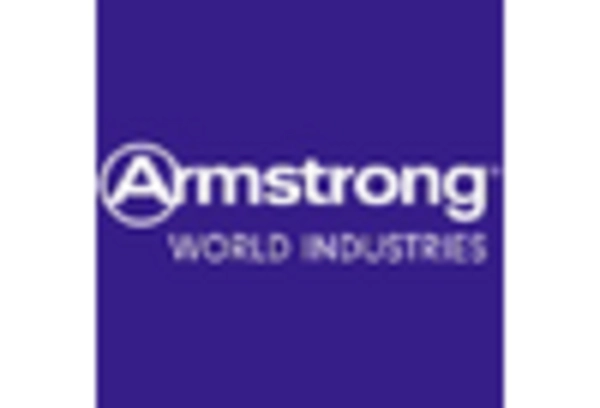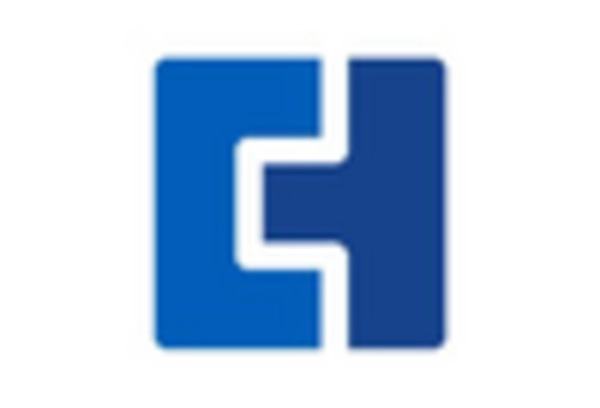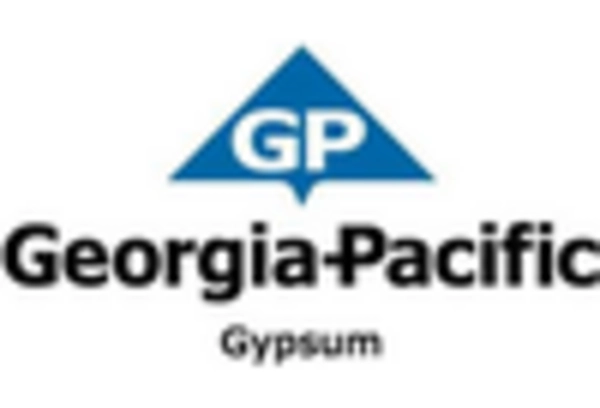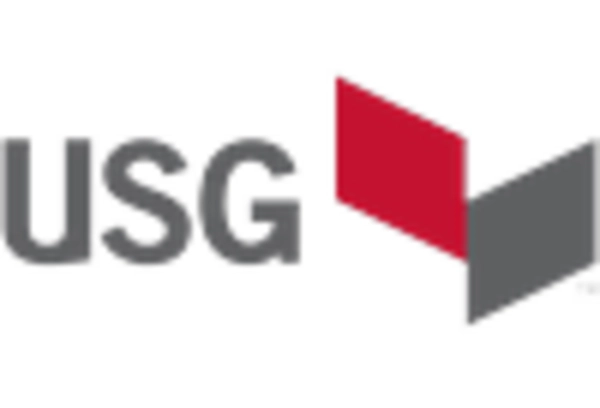Technological Innovations
Technological advancements in manufacturing processes are reshaping the Glass Fiber Reinforced Gypsum Market. Innovations such as improved fiber reinforcement techniques and enhanced production methods are leading to superior product quality and performance. These advancements not only increase the durability and strength of glass fiber reinforced gypsum but also reduce production costs. Industry reports suggest that the market for advanced building materials, including glass fiber reinforced gypsum, is anticipated to grow by approximately 6% annually. This growth indicates that ongoing technological innovations will likely play a crucial role in expanding the Glass Fiber Reinforced Gypsum Market.
Sustainability Initiatives
The increasing emphasis on sustainability within the construction sector appears to drive the Glass Fiber Reinforced Gypsum Market. As environmental concerns gain traction, builders and architects are seeking materials that minimize ecological footprints. Glass fiber reinforced gypsum, known for its recyclability and lower carbon emissions during production, aligns well with these sustainability initiatives. Reports indicate that the demand for eco-friendly building materials is projected to grow at a rate of approximately 8% annually. This trend suggests that the Glass Fiber Reinforced Gypsum Market is likely to benefit from heightened awareness and regulatory support for sustainable construction practices.
Customization and Aesthetic Appeal
The growing trend towards customization in construction and interior design is influencing the Glass Fiber Reinforced Gypsum Market. Consumers increasingly seek unique and aesthetically pleasing designs, prompting manufacturers to offer tailored solutions. Glass fiber reinforced gypsum can be molded into various shapes and finishes, allowing for creative applications in both residential and commercial projects. Market data suggests that the demand for customized building materials is on the rise, with an expected growth rate of 5% per year. This trend indicates that the Glass Fiber Reinforced Gypsum Market may experience enhanced opportunities as designers and architects explore innovative applications.
Rising Demand for Lightweight Materials
The construction industry's shift towards lightweight materials is a notable driver for the Glass Fiber Reinforced Gypsum Market. Lightweight materials not only reduce transportation costs but also enhance energy efficiency in buildings. Glass fiber reinforced gypsum, being significantly lighter than traditional gypsum products, offers advantages in installation and structural integrity. Market analysis indicates that the lightweight materials segment is expected to witness a compound annual growth rate of around 7% over the next few years. This trend suggests that the Glass Fiber Reinforced Gypsum Market could see increased adoption as builders prioritize efficiency and performance.
Regulatory Support for Building Standards
Regulatory frameworks promoting higher building standards are emerging as a key driver for the Glass Fiber Reinforced Gypsum Market. Governments and regulatory bodies are increasingly mandating the use of materials that meet specific safety and performance criteria. Glass fiber reinforced gypsum, known for its fire resistance and durability, aligns well with these regulatory requirements. Recent studies indicate that compliance with stringent building codes is expected to drive market growth by approximately 4% annually. This regulatory support suggests that the Glass Fiber Reinforced Gypsum Market is likely to thrive as stakeholders adapt to evolving standards.


















Leave a Comment